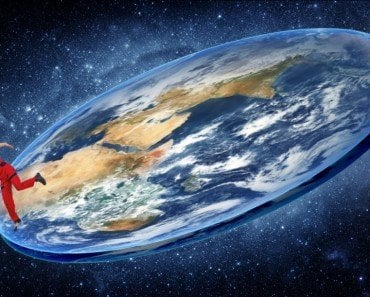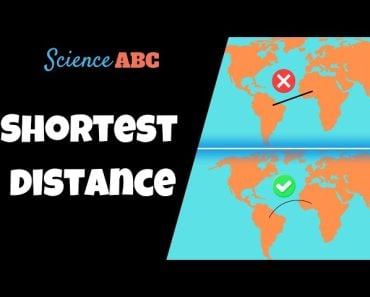Table of Contents (click to expand)
The popular belief that raindrops have the shape of teardrops is incorrect. Meteorologists have known for years that an actual raindrop is almost perfect sphere, but the shape of the larger drops is due to external forces like aerodynamic and gravitational ones. The size of the drops increases as they come closer to the Earth’s surface, and the larger size also results in a higher velocity. If the raindrop becomes too large in size, it splits in two and reacquires its original spherical shape.
It’s common knowledge that a falling raindrop has a shape that resembles a teardrop. Ask a bunch of random people to draw a raindrop falling from the clouds. Around 99% of them would draw it like a shower of teardrops exiting the clouds. Well, in this case, the people are 100% right. Or at least, that’s what they’re made to think. The weather forecasts on television depict raindrops as teardrops, which leads to common people being accidentally taught that raindrops have that shape. Even teachers (including professors!) are actively perpetuating this urban myth. Weather icons used throughout the media are illustrative of this widespread fallacy, which is obvious if you do a simple Google search.

That many sources can’t be wrong, right? I mean, even Google is in on this!
Recommended Video for you:
The Truth
Meteorologists have known for years that an actual raindrop bears no resemblance to a teardrop. The results obtained by picturing a small drop (less than a millimeter in diameter) using-high speed photography shows that raindrops are almost perfect spheres. If you increased it by 100 times or so, the larger version would resemble a hamburger bun. These results directly contradicts the age-old popular belief.

Now, you might be wondering why the drop is spherical. The answer to that lies in a simple phenomenon known as surface tension, the attractive force exerted upon the surface molecules of a liquid by the molecules beneath, which tends to draw the surface molecules into the bulk of the liquid and makes the liquid assume the shape that has the least surface area. In the case of raindrops, the smallest area that can be achieved while falling is that of a sphere. An isolated drop that isn’t distorted by external forces is pulled by its surface tension into a spherical shape.
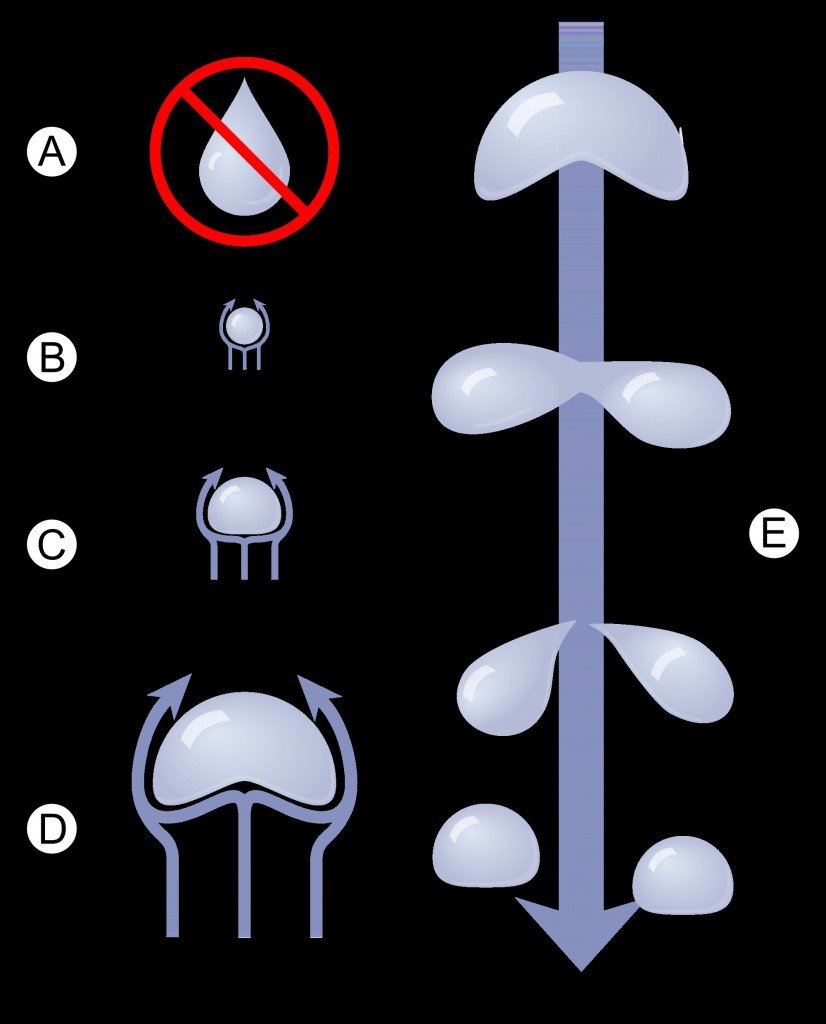
Micro-photographs of cloud and fog particles show that these drops are indistinguishable from perfect spheres.
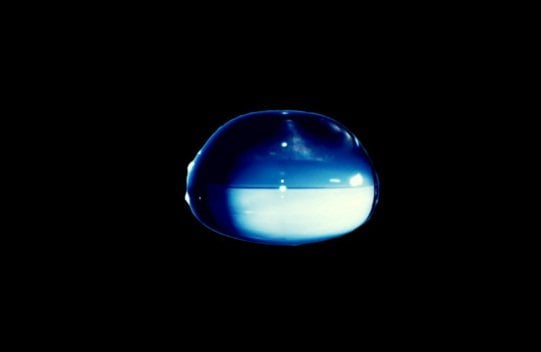
As the drops fall, they hit nearby drops and combine with them, thus making them larger. The weird shape of the larger drops is entirely due to the external forces acting on it, namely aerodynamic and gravitational ones. The size of the drops increases as they come closer to the Earth’s surface. The larger size also results in a higher velocity. The big drops that pelt down ferociously plummet through the air so fast that they create shape-deforming pressure differences around them. This causes the part near the bottom of the drop to develop excess pressure and therefore less pressure at the sides.
This difference of pressures tends to flatten the bottom part of the drop, i.e drive the water molecules from its top and center to the sides, thereby flattening the drop and increasing its horizontal diameter.
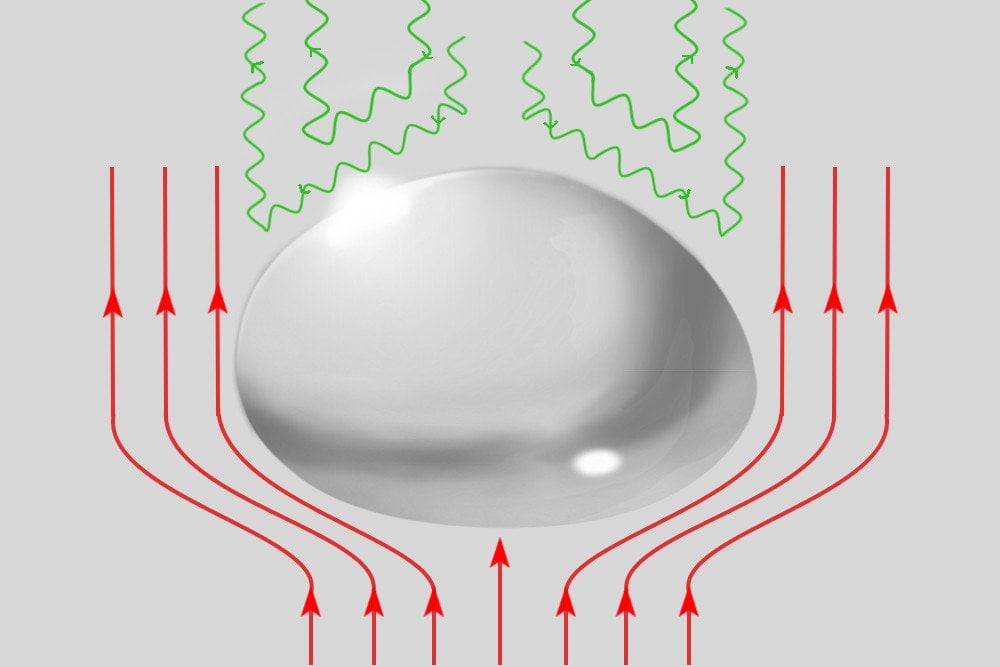
What’s more intriguing is that the resultant modified surface of curvature of the drop restores the pressure equilibrium in it. This proves that the best examples of science are found in nature.
The above adjustments only make up for the pressure differences caused by external pressures and aerodynamic forces. However, there’s another force that comes into picture and it needs to be overcome in order to achieve complete equilibrium. Obviously, we’re talking about the gravitational force!
[adinserter block=”2″]
If the raindrop becomes too large in size, it splits in two and reacquires its original spherical shape. This condition is satisfied when the drop achieves terminal velocity (the speed at which the drop falls without any further acceleration) and when the internal pressure isn’t uniform throughout. This pressure gradient is usually small, since terminal velocity is quickly achieved.
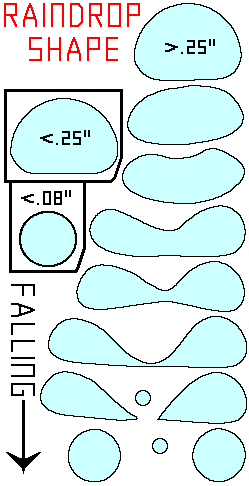
On the more technical side, the combination of hydrostatic and aerodynamic principles should result in a flatter top and a curvier bottom. In reality, however, it is the exact opposite.
This surprising revelation is because of another phenomenon known as viscosity (the resistance offered to the flow of any liquid). Up to this point, we assumed that the drops fall through a perfectly non-viscous fluid. However, air has some viscosity and it is enough to influence the shape of the drops. When moving around a large raindrop, air behaves in the same manner as that of an airplane wing. The layer of air surrounding the drop forms an unsteady region at the top surface. In this region, the air pressure is significantly lower than that of the base of the drop. This results in a greater curvature at the top surface than the base.
Whew, that’s a whole lot of physics, but we made it through! The common myth of teardrop-shaped raindrops has been finally debunked. Even though we know the truth, artists and illustrators will continue drawing raindrops however they want, teardrops and all!
Check this interesting video by NASA on this topic:
References (click to expand)
- The Shape of a Raindrop | Precipitation Education. The National Aeronautics and Space Administration
- Are Raindrops Shaped Like Teardrops? Completed - USGS.gov. The United States Geological Survey
- Drop (liquid) - Wikipedia. Wikipedia
- McDonald, J. E. (1954, February). The Shape of Raindrops. Scientific American. Springer Science and Business Media LLC.



